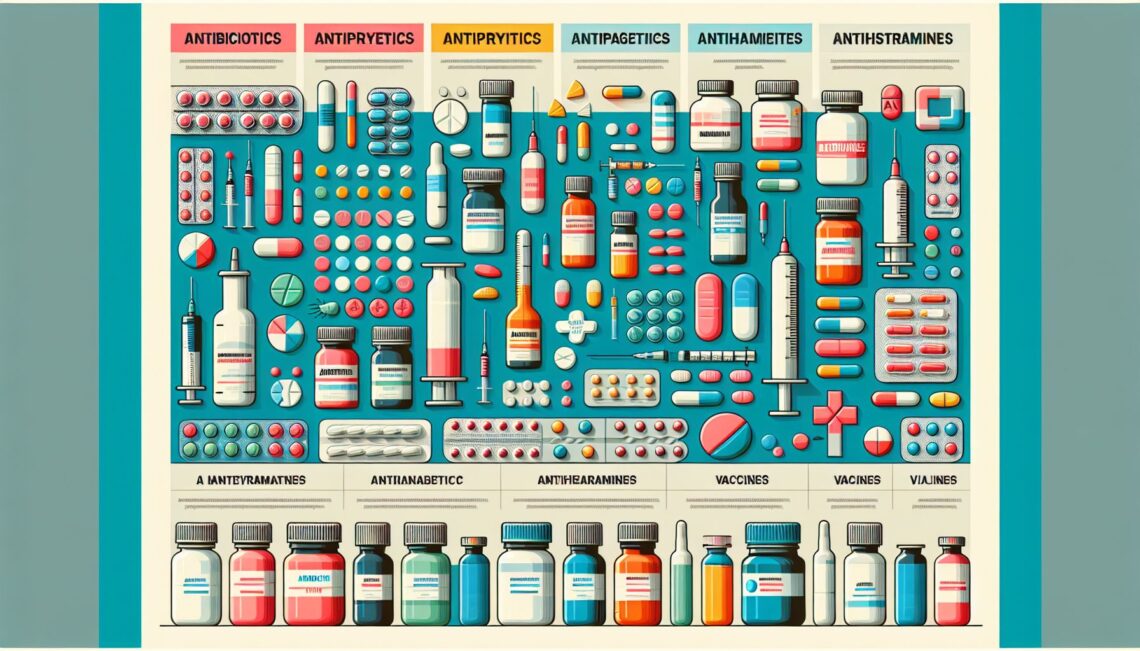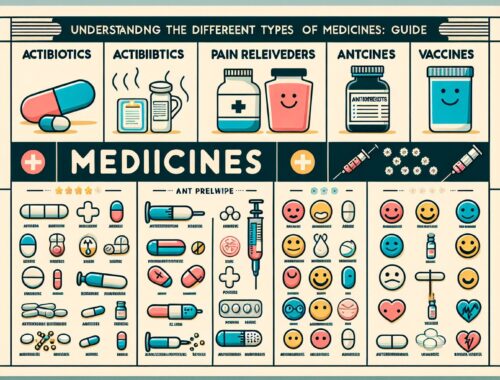
The Different Types of Medicines
Medicines play a crucial role in the healthcare system, aiding in the prevention, treatment, and management of various diseases and illnesses. From pills and tablets to injections and infusions, medicines come in different forms, each serving a specific purpose. In this article, we will explore the different types of medicines and their unique characteristics.
Introduction to Medicines
Medicines, or pharmaceutical drugs, are substances intended for the diagnosis, cure, treatment, or prevention of diseases. They are formulated with active ingredients that target specific bodily functions or processes, providing relief, managing symptoms, or combating infections.
The Various Forms of Medicines
-
Oral Medicines: Commonly known as pills or tablets, oral medicines are designed to be swallowed and absorbed through the gastrointestinal tract. They come in different shapes, sizes, and colors, catering to a variety of needs. Some pills are specifically coated for delayed absorption, while others can be divided into smaller doses. Oral medicines are commonly prescribed for chronic conditions, such as hypertension, diabetes, and high cholesterol.
-
Topical Medicines: These medicines are applied to the surface of the skin, providing localized relief or treatment. Creams, ointments, gels, and lotions are typical examples of topical medicines. They are often used to treat skin conditions like rashes, acne, or infections, providing anti-inflammatory, antifungal, or moisturizing effects. Additionally, transdermal patches allow for systemic absorption of medications, delivering a controlled release over time.
-
Injections: Some medications need to be administered directly into the body through injections. This route ensures rapid absorption into the bloodstream, bypassing the digestive system. Injections can be subcutaneous (under the skin), intramuscular (into the muscle), or intravenous (directly into a vein). Insulin, vaccines, and certain antibiotics often require injection administration for their therapeutic benefits.
-
Inhaled Medicines: These medicines are inhaled into the respiratory system, where they can reach the lungs and provide direct relief or treatment. Inhalers, nebulizers, and nasal sprays are commonly used for respiratory conditions like asthma, chronic obstructive pulmonary disease (COPD), or allergies. Inhaled medicines allow targeted delivery to the lungs, ensuring faster onset of action with reduced systemic side effects.
-
Eye and Ear Drops: Eye and ear drops are specifically formulated to treat conditions affecting the eyes or ears. These medications are administered directly into the affected area, providing relief from infections, inflammation, or discomfort. Eye drops are used to treat conditions like glaucoma, conjunctivitis, or dry eyes, while ear drops are commonly prescribed for ear infections or earwax removal.
Conclusion
Medicines come in various forms to suit different medical needs and ensure effective treatment. Whether you need relief from pain, treatment for a chronic condition, or management of a specific ailment, there is a medicine designed to assist you. Understanding the different types of medicines allows patients to collaborate with healthcare professionals and make informed decisions about their treatment. Always consult a healthcare provider for proper diagnosis, prescription, and usage instructions for any medication.
Remember, medicines have the potential for both benefits and risks. Adherence to prescribed dosages, following healthcare professional advice, and reporting any side effects are essential for safe and effective use of medicines.
You May Also Like

Understanding the Different Types of Medicines: A Guide
January 8, 2024
Understanding Different Types of Medicines
January 26, 2024

